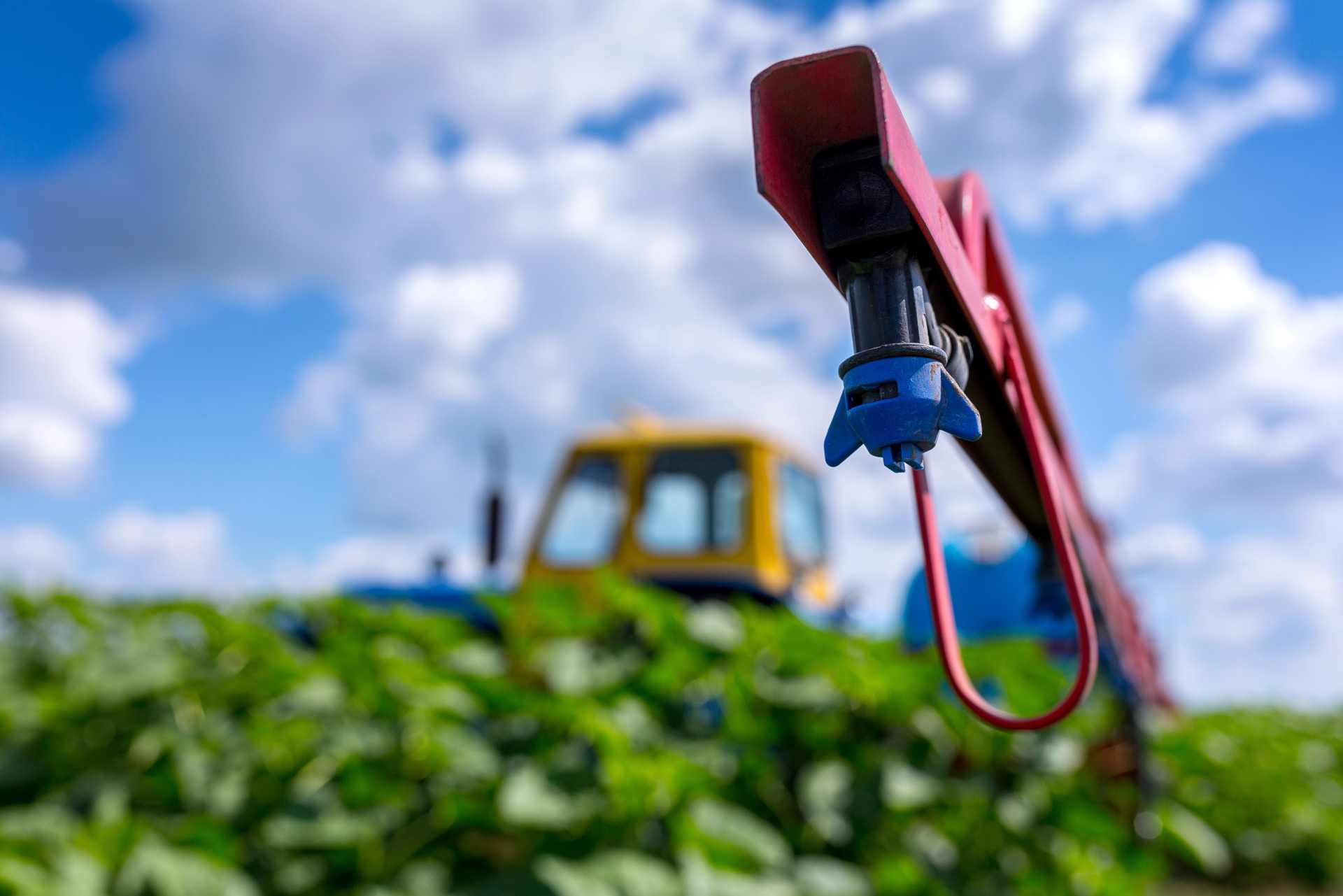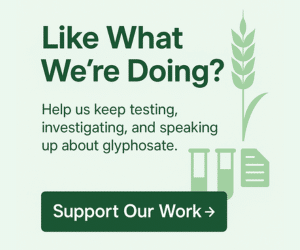In 2015/16, MPI promised a reassessment of glyphosate’s pre-harvest use on cereals after finding widespread residues and multiple exceedances.
Nearly a decade later, that promise remains unfulfilled.
A Red Flag Raised in 2015/16
When MPI’s Food Residues Survey Programme (FRSP) tested wheat and peas in 2015/16, the results should have triggered urgent action.
- Glyphosate residues were found in 26 out of 60 wheat samples.
- 20 samples exceeded the legal maximum residue limit (MRL) of 0.1 mg/kg.
In plain language: one in three wheat samples was contaminated, and many were above the allowable safety threshold. For a country that prides itself on a “clean, green” image, this was a major food safety red flag.
At the time, MPI indicated that pre-harvest glyphosate use on cereals would be reviewed — including residue data, product label wording, and whether specific MRLs for individual cereal crops needed to be set.
This was supposed to be the turning point — the moment when glyphosate use on staple crops like wheat, barley, and oats would come under real scrutiny.
Yes, MPI has recently announced that it will not proceed with increasing the MRLs for wheat, barley and oats — but that doesn’t answer the core question this article is about. The proposed increases were a separate policy conversation. The reassessment MPI promised in 2015/16 is still missing. No report. No documented outcome. No transparency.
And that is the real problem.
Not increasing the limits simply avoids one proposed change — it does not resolve the underlying regulatory failure that triggered the reassessment in the first place.
The “Reassessment” That Never Arrived
Fast forward almost ten years, and what has happened?
- MPI told the public in 2015/16 that it would review product labels for clarity and consistency around pre-harvest use. But nearly ten years later, we still don’t have any publicly documented outcome that confirms whether those label directions were actually changed — or how.
- MPI publicly stated on 30 October 2025 that pre-harvest glyphosate desiccation on food crops is not permitted. But to date, there is still no publicly accessible record of the regulatory decision that implements that prohibition.
- No specific new MRLs were set in the years that followed. The default values remained in place.
- Glyphosate disappeared from routine food monitoring. The FRSP hasn’t consistently reported glyphosate residues in cereals since 2015/16.
- The 2016 New Zealand Total Diet Study (NZTDS) skipped glyphosate entirely. The new 2024 NZTDS (Infants & Toddlers) is testing 362 chemicals — but not glyphosate, AMPA, or glufosinate.
So while the promise of reassessment was made in 2016, the practical outcome has been business as usual. The most widely used herbicide in the country has been quietly sidelined in monitoring programmes that claim to protect public health.
Ten Years of Silence
The story of glyphosate monitoring in New Zealand is really the story of silence and delay.
When a problem is politically uncomfortable, delay becomes the default strategy. A decade of “reassessments” and “consultations” allows the issue to fade from public view while the status quo carries on.
Meanwhile:
- Farmers have continued using glyphosate pre-harvest.
- Supermarkets have continued selling bread, cereals, and oats with no transparent, up-to-date testing data.
- Parents have continued feeding children foods that may carry glyphosate residues — with no way to know the real levels.
For a chemical under global scrutiny, with court cases overseas linking glyphosate to cancer and concerns about endocrine disruption and microbiome impacts, this absence of data is not just negligent. It’s reckless.
Other Issues Move Fast — Why Not This?
The slowness of glyphosate reassessment is even more striking when compared with other food safety decisions.
- Folic acid fortification of bread was mandated in 2021 and rolled out within a few years.
- Infant formula standards are regularly updated to reflect new nutritional science.
- COVID-19 food safety protocols were pushed through at speed.
When there’s political will, MPI and regulators can move quickly. But on glyphosate, the wheels grind slowly — almost as if the delay itself is the strategy.
From Promise to Proposals — and then a Sudden Retreat
After nearly a decade of drift, what finally emerged was a public consultation in 2025 proposing to raise the allowable glyphosate residue limits on key cereal crops:
- Wheat, barley, oats: from 0.1 mg/kg up to 10 mg/kg (a 9,900% increase)
- Dry peas: up to 6 mg/kg
The stated justification?
To “align with international trade partners” and reflect “current use patterns.”
But under sustained public pressure — and widespread concern — MPI then announced on 30 October 2025 that these proposed increases would not proceed.
On paper, this looks like a win.
But it still leaves the core issue unresolved:
The reassessment MPI promised in 2015/16 never materialised.
Stopping the MRL increases simply prevents one change from going ahead — it does not answer:
- what happened to the original reassessment?
- what data was reviewed?
- when (if ever) did the regulatory position actually change?
- and where is the record that legally confirms pre-harvest desiccation on food crops is prohibited?
In other words — shelving the MRL increases isn’t the same as doing the job that MPI said it would do a decade ago.
What Delay Really Means
A ten-year delay isn’t just bureaucratic inertia. It has real consequences:
- Ten years of exposure: Every loaf of bread, every bowl of Weet-Bix, every serving of oats consumed since 2015 may have carried glyphosate residues, without transparent monitoring.
- Ten years of farming practice: Pre-harvest spraying has remained routine, embedding glyphosate into our food system.
- Ten years without answers: Parents, doctors, scientists, and the public have been left in the dark.
If you’ve ever wondered how glyphosate actually gets into our food, we break the pathways down clearly in our article: How Glyphosate Gets Into Our Food.
If a government identifies a risk and promises to act, but then spends a decade delaying while exposures continue, is that oversight — or is it design?
The Bigger Picture: Public Trust
Food safety monitoring only works if the public can trust it. When MPI says “we test food for contaminants,” people assume that includes the big ones — like glyphosate. When it doesn’t, trust erodes.
And when reassessments take a decade, public confidence collapses altogether.
New Zealanders deserve food safety systems that act in the public interest, not in the interests of delay, trade convenience, or industry comfort.
What Needs to Happen Now
- Glyphosate, AMPA, and glufosinate must be reinstated in the Food Residues Survey Programme as core analytes, not optional extras.
- Specific MRLs for cereals must be based on health risk, not trade alignment. Proposing to raise limits by 9,900% sends the wrong signal.
- Regular, transparent publication of glyphosate results in breads, cereals, oats, infant cereals, and milk substitutes must become standard practice.
- Accountability at the ministerial level: The Minister for Food Safety must answer why ten years of delay have left New Zealanders without meaningful protection.
Conclusion: Delay Is Not Neutral
A full decade has passed since MPI promised to reassess glyphosate’s pre-harvest use on cereals — yet there is still no traceable outcome. No reassessment report. No published review. No explanation. New Zealanders are simply expected to believe that somewhere, somehow, the issue has been resolved — while the evidence says otherwise.
Dropping the proposed MRL increases is not the same as delivering the reassessment. One was a tactical retreat under public pressure. The other was supposed to be a scientific evaluation of how glyphosate is used on the crops our families eat.
The question now is unavoidable:
If MPI never completed — or never even began — the reassessment it promised, what does that say about food safety oversight in this country?
Trust is not built on claims.
It is built on documented action.
The reassessment was promised.
The public has every right to see the evidence that it exists — or the admission that it doesn’t.
Resources & References
When agencies don’t answer the questions they raised themselves, we have to go back to the paper trail. These are the documents that show what was said — even if what was promised never materialised.
MPI – Food Residues Survey Programme (FRSP)
Official description of the monitoring programme for contaminants in foods.
MPI – Glyphosate in Food
Confirms glyphosate detections and exceedances in wheat in 2015/16, and subsequent label “review.
MPI – 2016 NZ Total Diet Study Report
Provides chemical residue results across foods — glyphosate notably absent.
MPI – 2024 New Zealand Total Diet Study (Infants & Toddlers)
Lists 362 chemicals tested in infant foods — again, glyphosate excluded.
MPI – Consultation on Proposed Glyphosate MRL Changes (2025)
Proposals to raise glyphosate limits for cereals and peas.
MPI – Media Release (30 Oct 2025)
Residue levels for glyphosate remain unchanged for most crops
RNZ Coverage – Thousands submit on proposed increase in glyphosate
Reporting on widespread opposition to MPI’s proposed MRL increases.
It’s impossible to talk about “trust in the system” if the system never closes its own loops. The public deserves not just statements — but follow-through. Accountability is measured in outcomes, not intentions.
Image Source & Attribution
The image featured on this page is from Depositphotos and credited to the photographer Sodel_Vladyslav.




